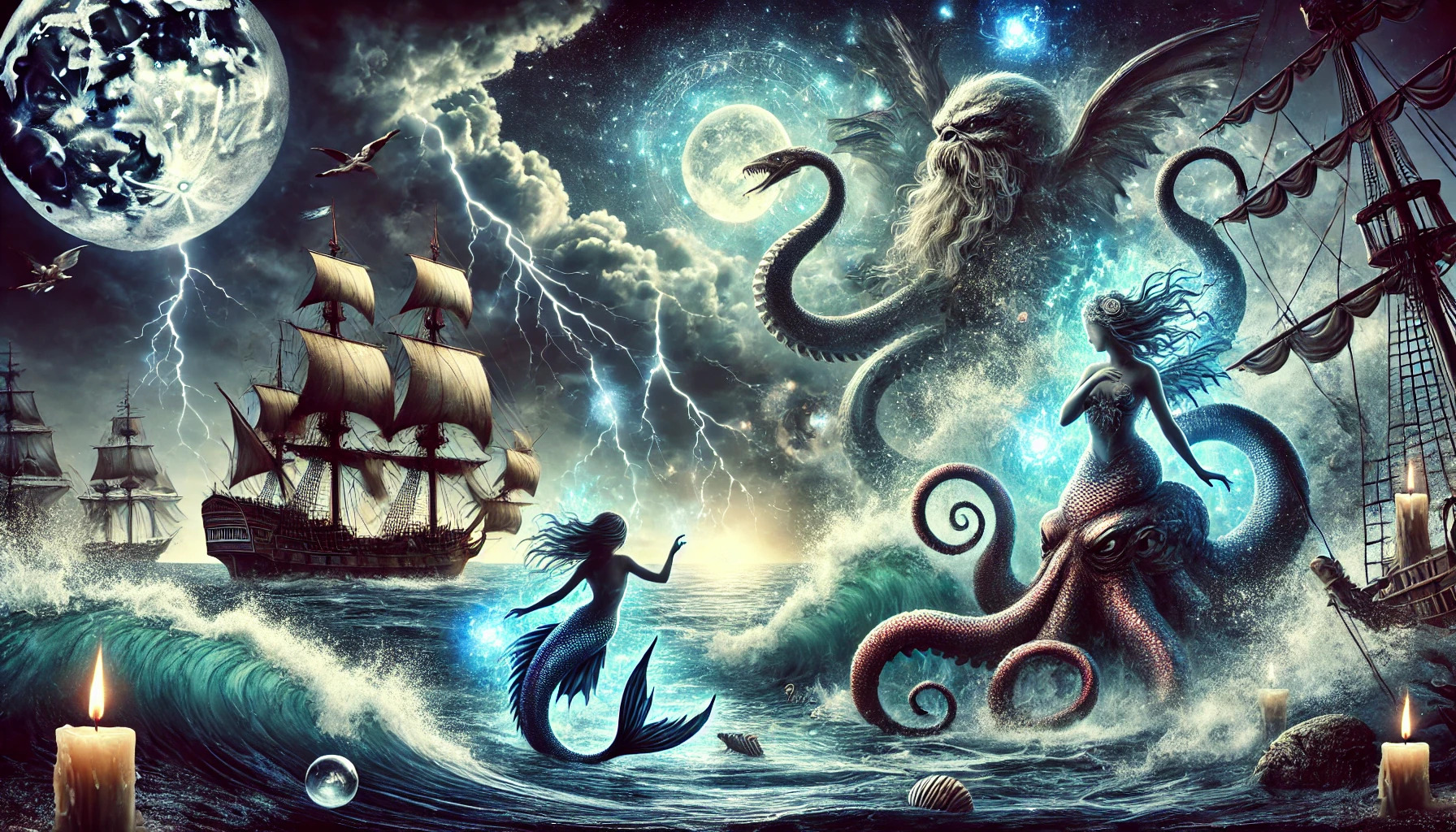Seafaring myths and legends have captured the imaginations of people for centuries, blending elements of adventure, mystery, and the unknown. These tales often feature enchanting mermaids, fearsome Krakens, and ghostly ships that roam the oceans, leaving sailors both intrigued and terrified.
From ancient lore to more modern tales, the figures of mermaids and Krakens serve as both warnings and wonders for those who venture into the deep waters. Each story reflects human hopes and fears about the vast, unpredictable sea.
Ghost ships, like the notorious Flying Dutchman, spark curiosity about the supernatural and the impact of superstition on life at sea. These legends remind us of the dangers sailors faced and offer a glimpse into the beliefs that shaped their experiences.
Mermaids in Mythology
Mermaids have captured human imagination for centuries, appearing in various cultures around the world. Their allure and mystery stem from their unique blend of beauty and danger, often symbolizing the unpredictable nature of the sea.
Origins and Historical Accounts
The origins of mermaid myths can be traced back to ancient civilizations. One of the earliest accounts comes from the Sumerian goddess Atargatis, who transformed into a fish. This idea evolved in different cultures, leading to various interpretations of mermaids.
In Greek mythology, sirens were enchanting beings known for luring sailors to their doom. Conversely, Norse legends often depict mermaids tied to formidable sea giants. These contrasting origins illustrate the diverse representation of mermaids, from nurturing figures to those associated with peril.
Symbolism and Interpretations
Mermaids symbolize duality, reflecting both beauty and danger. They represent the mystery of the ocean, a place that can be both calming and treacherous. In many cultures, mermaids embody feminine power and allure, often drawing sailors into the depths with their song.
Additionally, mermaids can signify transformation and the unknown. Their half-human, half-fish form often represents the fluidity between two worlds. This duality encourages exploration of identity and the mysteries of life and nature.
Cultural Depictions Around the World
Cultural depictions of mermaids vary widely. In Japan, the ningyo is a fish-like creature that grants good fortune but warns against capturing it. Meanwhile, the Indonesian putri duyung is often portrayed as a beautiful woman who brings both blessings and misfortune.
In European folklore, mermaids have been romanticized in tales and songs, while they often play roles in cautionary stories about the sea. Each culture adds its unique twist, contributing to the rich tapestry of mermaid lore worldwide.
Kraken: The Legendary Sea Monster
The Kraken is a fascinating creature in maritime folklore, known for its massive size and fearsome reputation. Many sailors have attributed mysterious ship disappearances and mishaps to this mythical monster. The stories of the Kraken capture the imagination and reflect humanity’s relationship with the sea.
Historical References and Descriptions
Historical accounts of the Kraken often depict it as a giant cephalopod, resembling a gigantic squid or octopus. These descriptions emerged from Norse and Greek myths, where it was said to lurk in the waters between Norway and Iceland. Sailors claimed the Kraken could reach lengths of 40 to 50 feet.
The fear inspired by the Kraken is seen in tales of it dragging ships underwater. To appease the creature, seafarers performed rituals, believing their safety depended on it. Many legends suggest that actual sightings of giant squids might have fueled these stories, blending reality with myth.
The Kraken in Literature and Film
The Kraken has become a popular subject in literature and film. It appears in classic works such as Jules Verne’s “20,000 Leagues Under the Sea.” In this novel, the creature is portrayed as a terrifying force of nature.
In modern media, the Kraken continues to captivate audiences. It appears in films like “Pirates of the Caribbean,” where it plays a pivotal role as a fierce antagonist. Its presence in popular culture emphasizes its status as one of the most iconic sea monsters, symbolizing both fear and the unknown qualities of the ocean.
Phantom Vessels and Ghost Ships
Phantom vessels and ghost ships have long captured the imagination of sailors and adventurers alike. These mysterious ships are often found adrift without crew, sparking tales of the supernatural and intrigue on the high seas.
Famous Legends of Ghostly Vessels
Many ghost ships feature in maritime legends. These vessels, often spotted under strange circumstances, are said to carry the souls of sailors who met untimely ends.
Some popular examples include the Mary Celeste, found abandoned in 1872, and the SS Valencia, which sank in 1906. Each story contributes to a rich tapestry of folklore, showcasing fears and hopes of those who brave the ocean.
The Flying Dutchman
The Flying Dutchman is perhaps the most famous ghost ship in maritime lore. This legendary vessel is said to sail the seas forever, doomed to never reach port.
Sightings date back to the 17th century, when sailors claimed to see it glowing in the distance. Traditionally, its appearance is viewed as an omen of doom for those who encounter it.
Modern-Day Sightings and Reports
Even today, sailors report sightings of ghostly ships. These modern encounters often involve vessels appearing suddenly on the horizon, only to vanish.
Some believe these sightings are linked to the rich history of the sea and the unresolved mysteries that linger. Reports continue to fuel fascination and fear, ensuring that the legend of ghost ships endures in contemporary culture.
The combination of ancient traditions and new tales keeps the mystery alive, inspiring curiosity and caution among those at sea.

